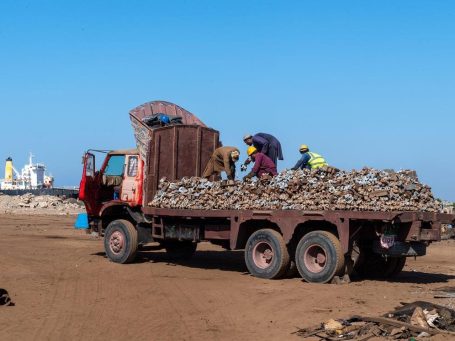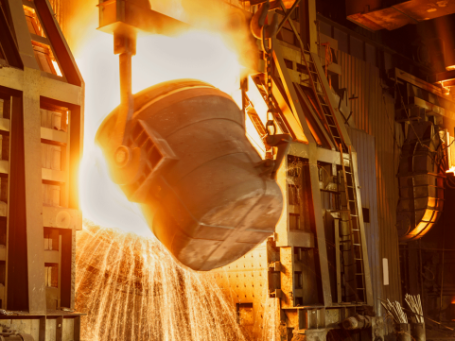Scrap Steel Recycling: The Cleansing Revenue Engine
High Ground’s industrial business of recycling scrap metal both clears the way for the transformation of conflict zones to farms while also generating the revenue necessary to deploy the next steps.
This process begins with clearing, recycling, and selling at a profit battlefield and port metals including valuable ballistic metal, industrial, military, and marine scrap. After clearing and profiting from this low-hanging fruit, High Ground than focuses on centralizing and scaling its localized steel recycling operations by, among other things, (i) installing foundries and steel mills in under-developed nations to provide a constant local source of steel for further development, (ii) centralizing the processing of ballistic metal to allow for on-site processing via smelting and milling, and (iii) increasing steel production and transportation capabilities at ports to allow for greater steel export to profitable markets.
High Ground’s scrap recycling business is well positioned to benefit from building market pressure on the global steel scrap market that will likely result in improved market conditions for sellers. The global market for steel is under pressure for nationalization with many countries restricting and banning the export of steel and scrap. Additionally, with steel being the dirtiest industry in terms of energy and carbon emissions there is widespread pressure for reducing the carbon footprint and using recycled steel instead of ore. There is also further market expansion as a result of increasing vertical integration of alternative green energy solutions. The current scrap prices are the lowest that they have been in years, however, the demand is rising and with increasing export restrictions the supply is shrinking. In the ballistic sector, ballistic supply is short with major demands as the world continues to arm itself. The demand for ballistic steel is likely to only further rise as conflicts continue and demand for ballistic material grows with every infrastructure project. Production will likely need to acquiesce to carbon emission regulation as it ramps to meet demand.




This website contains forward-looking statements, which reflect the company’s views at the time such statements were made with respect to future events and are not a guarantee of future performance or developments. You are strongly cautioned that reliance on any forward-looking statements involves known and unknown risks and uncertainties.
We need your consent to load the translations
We use a third-party service to translate the website content that may collect data about your activity. Please review the details in the privacy policy and accept the service to view the translations.